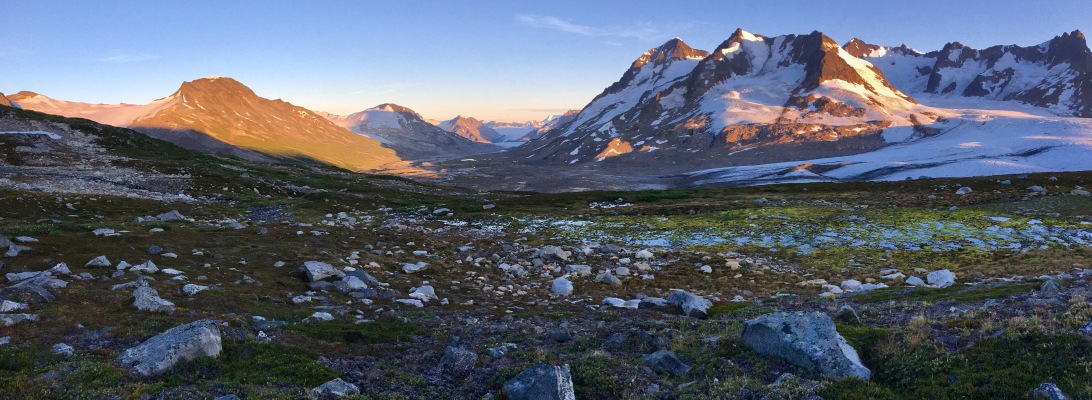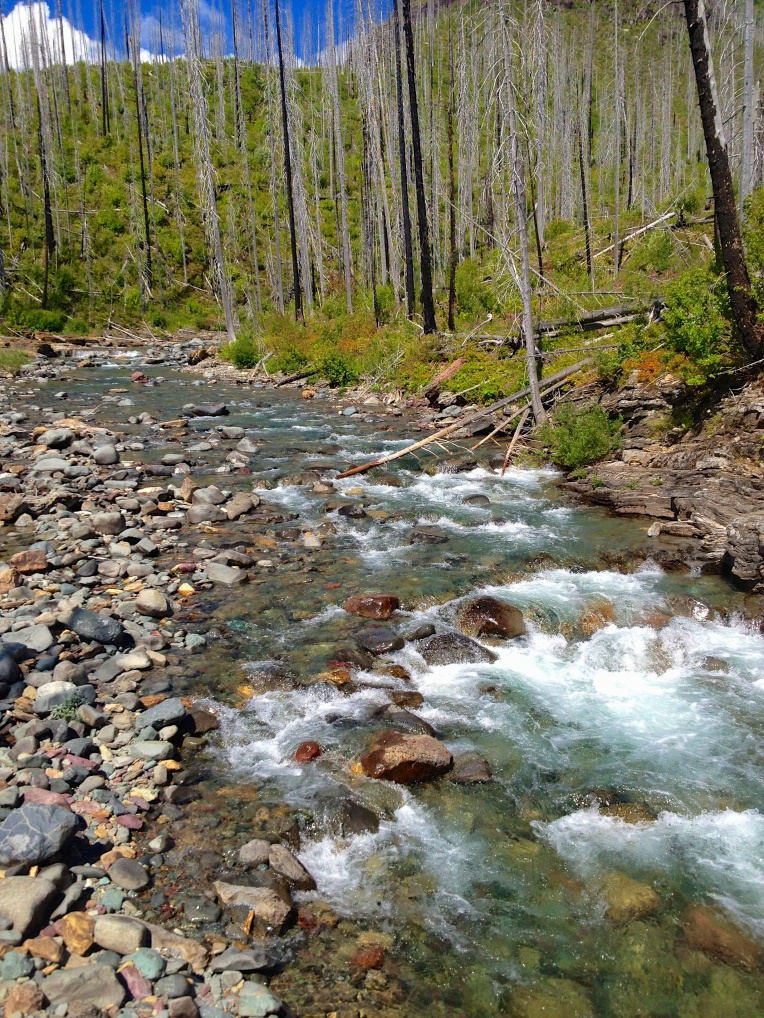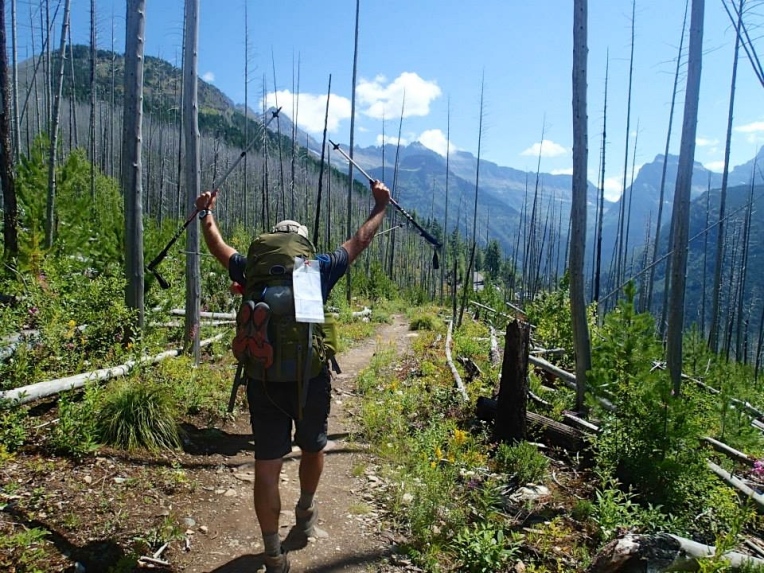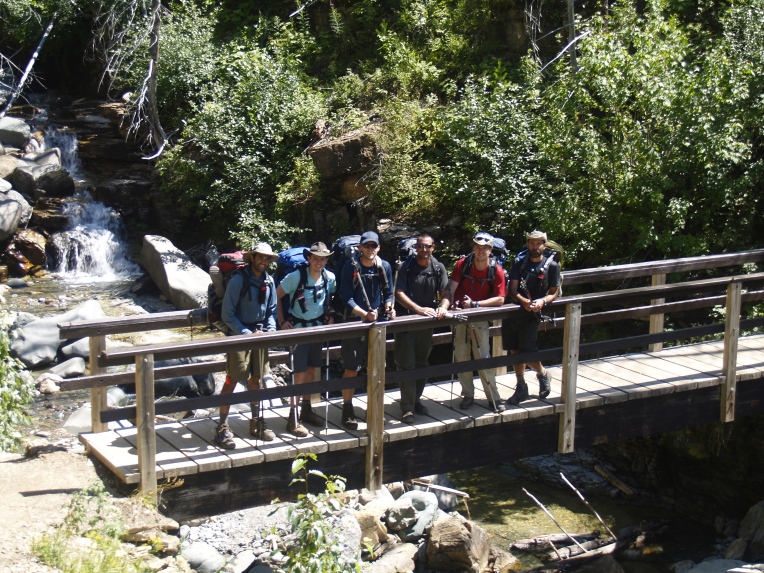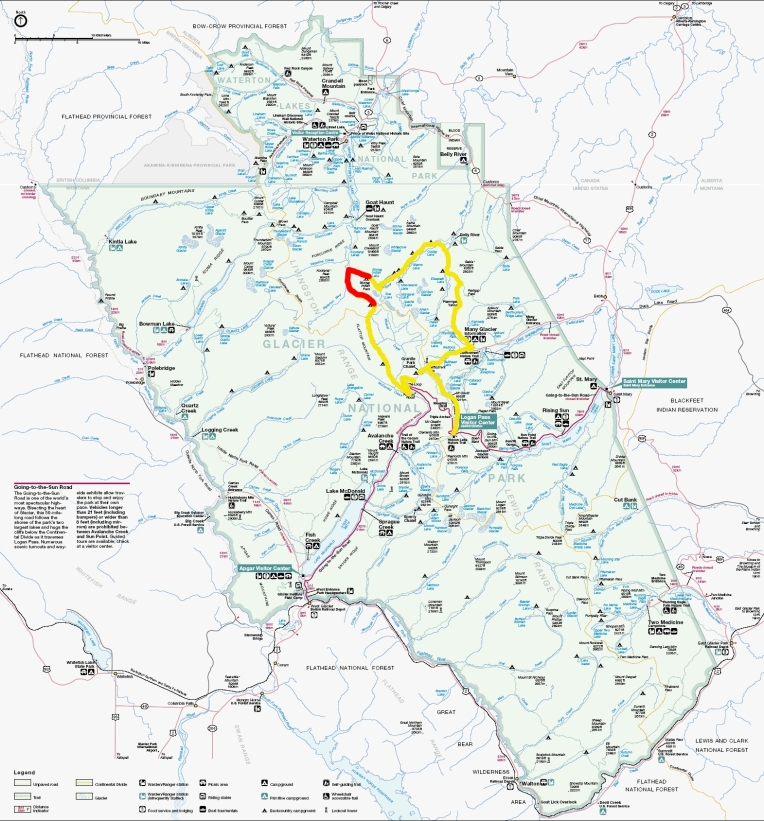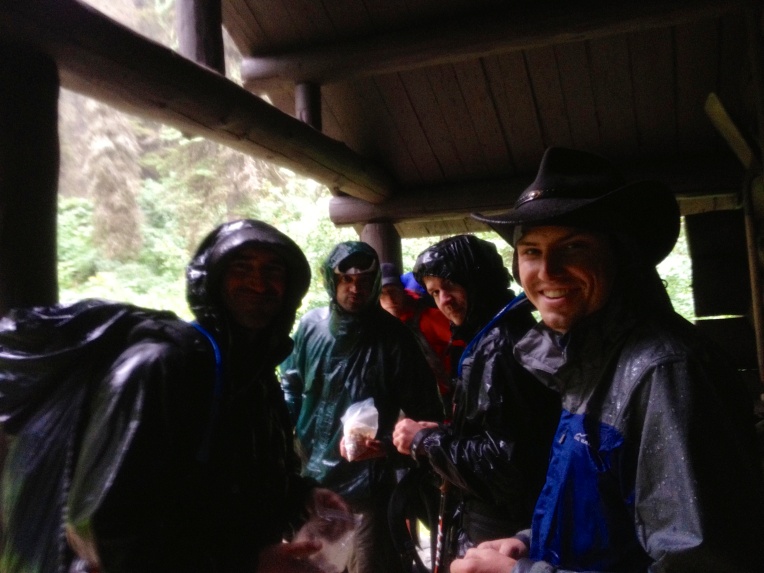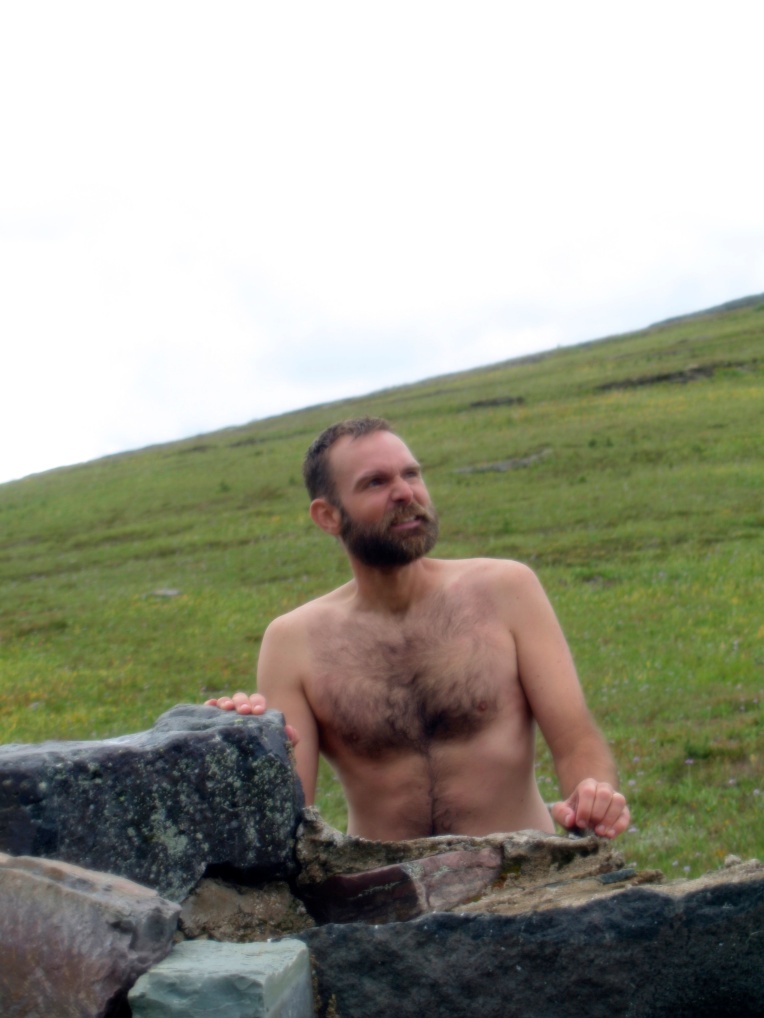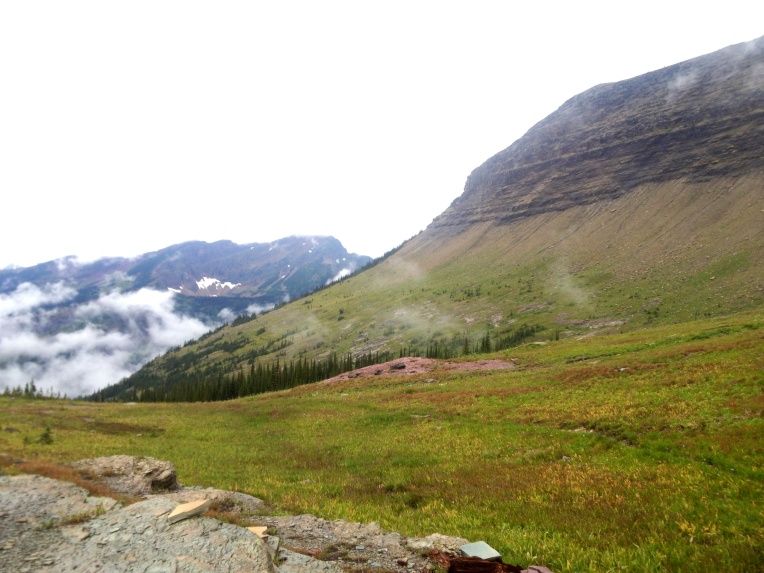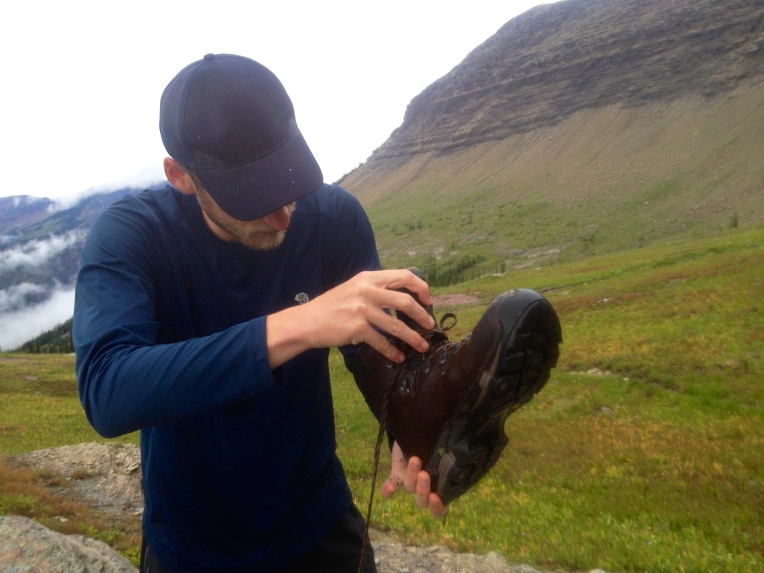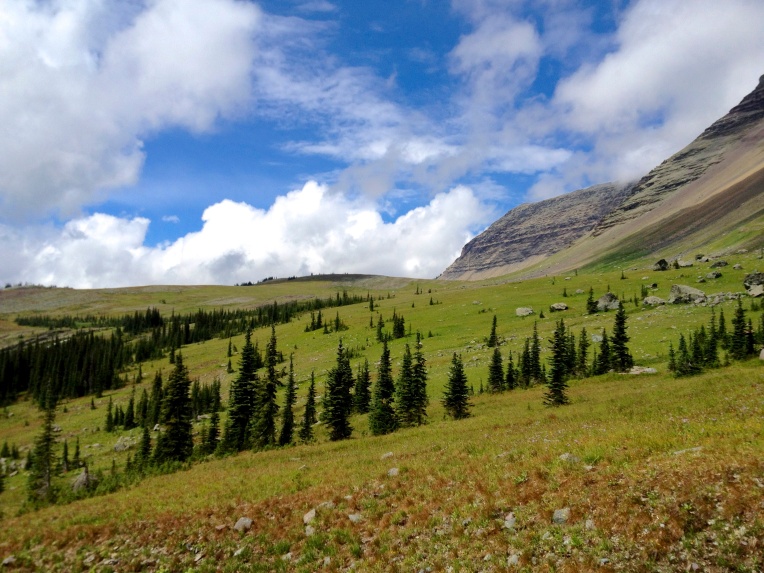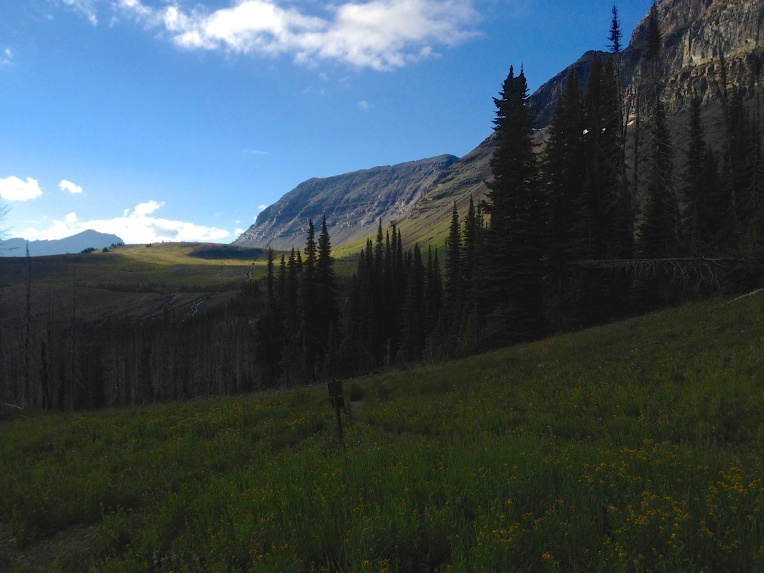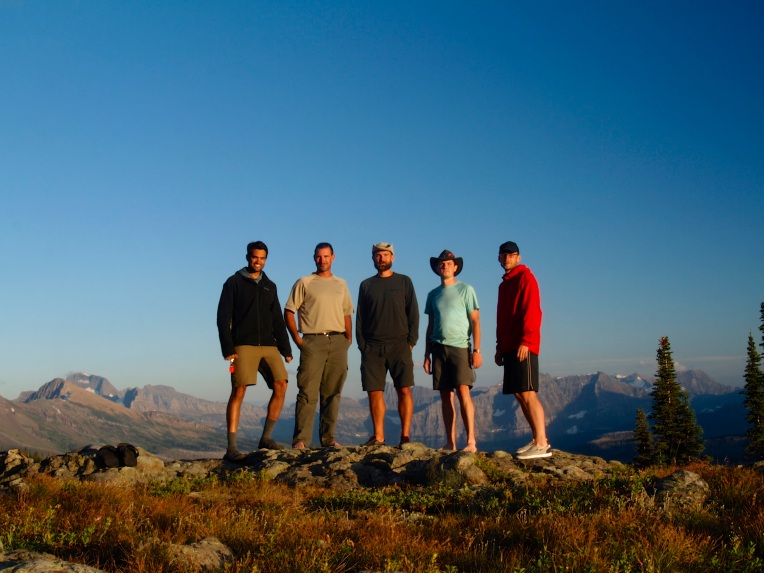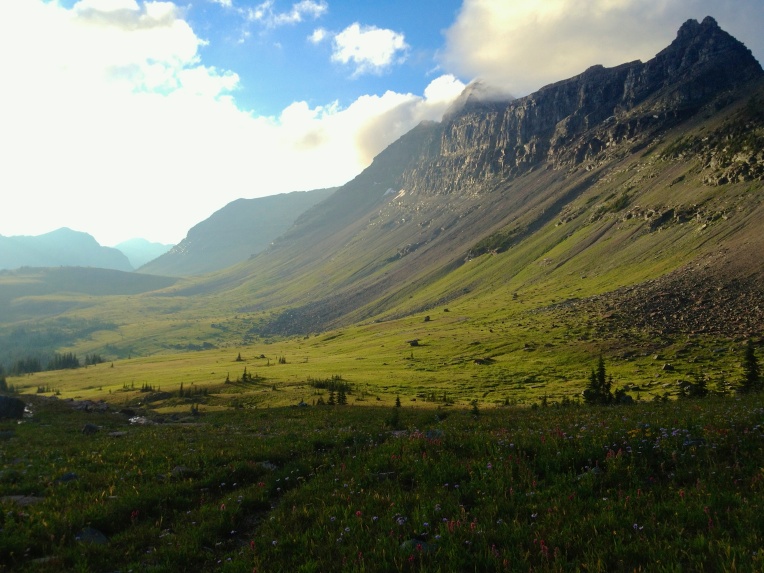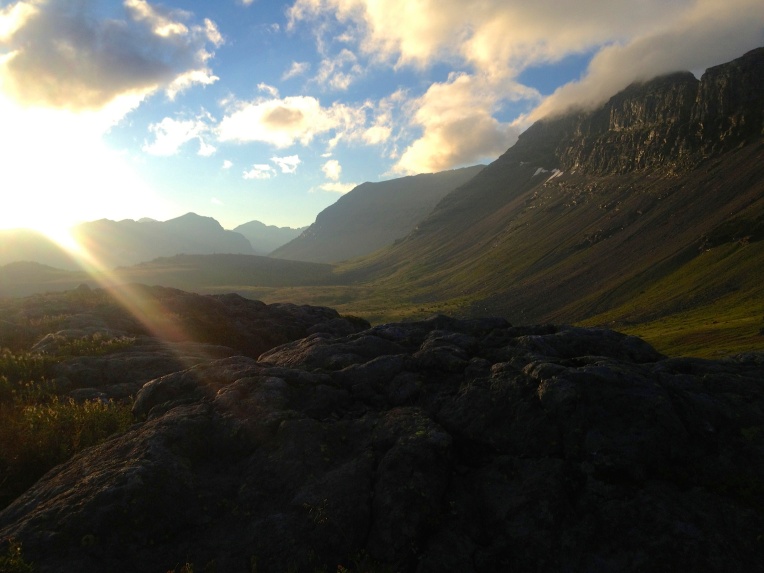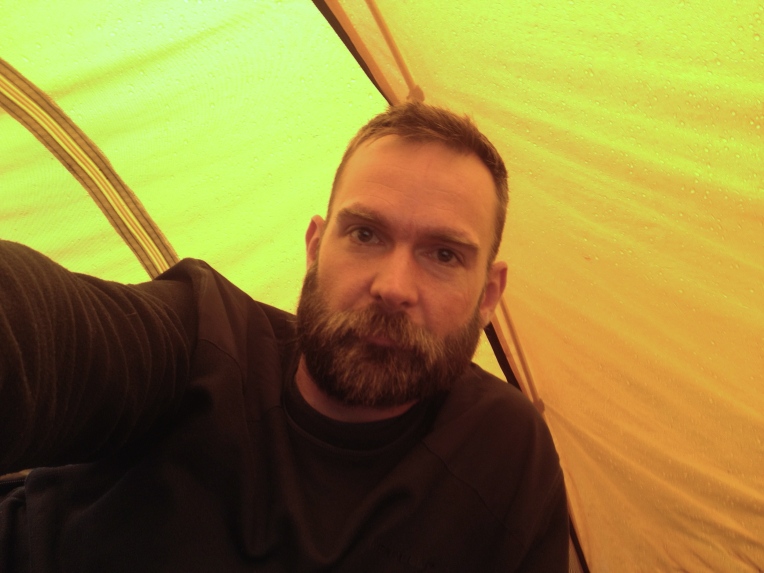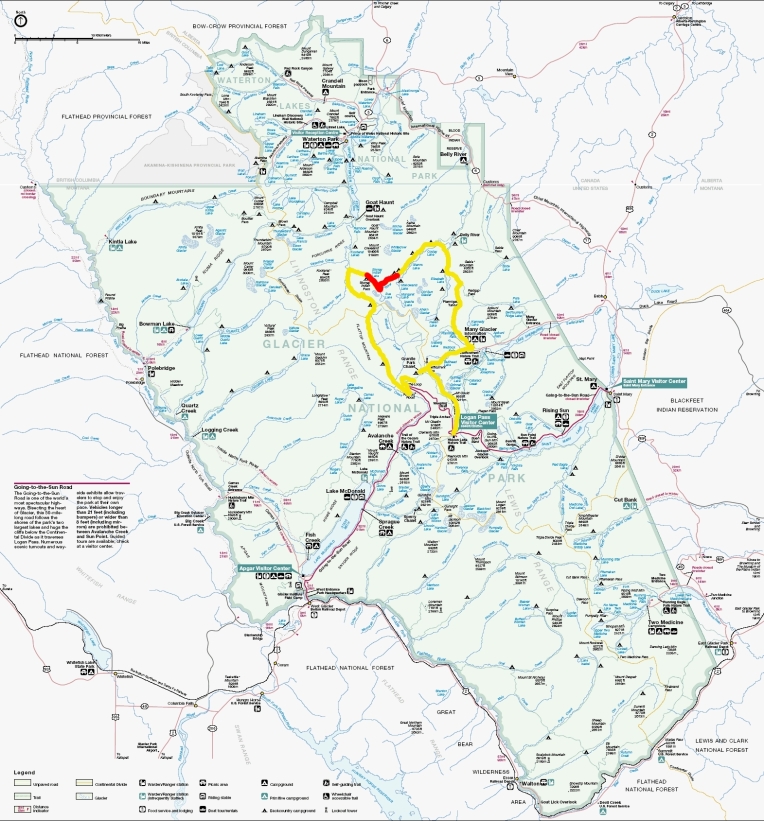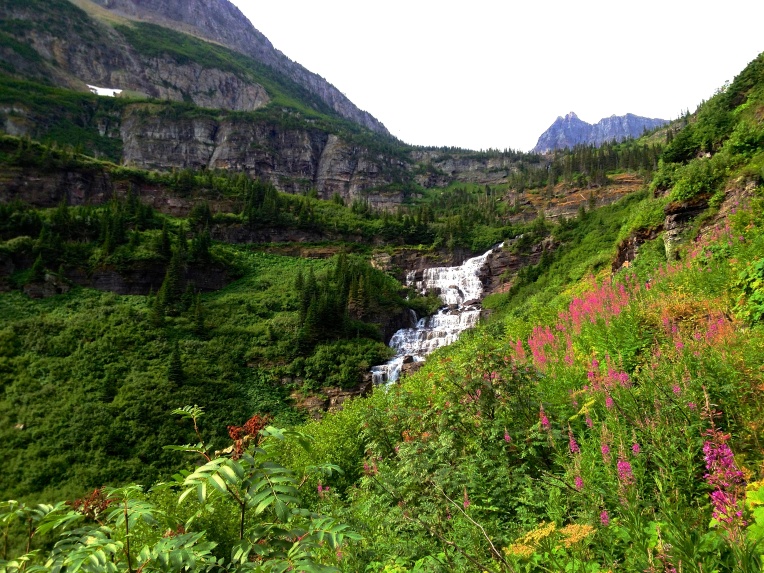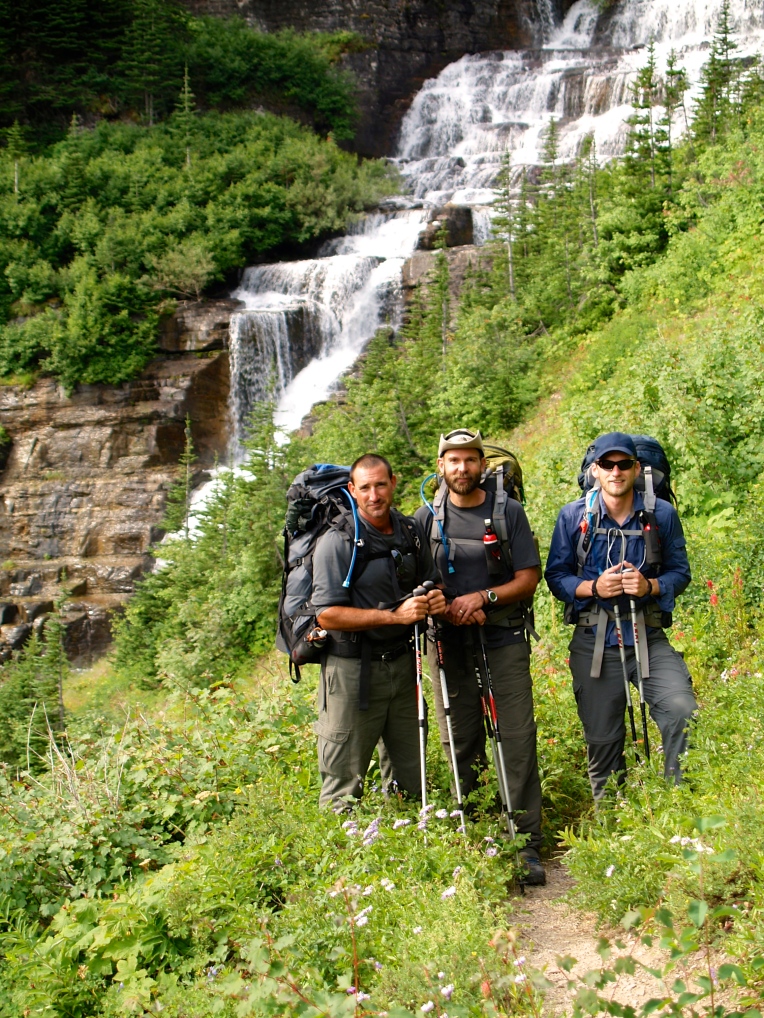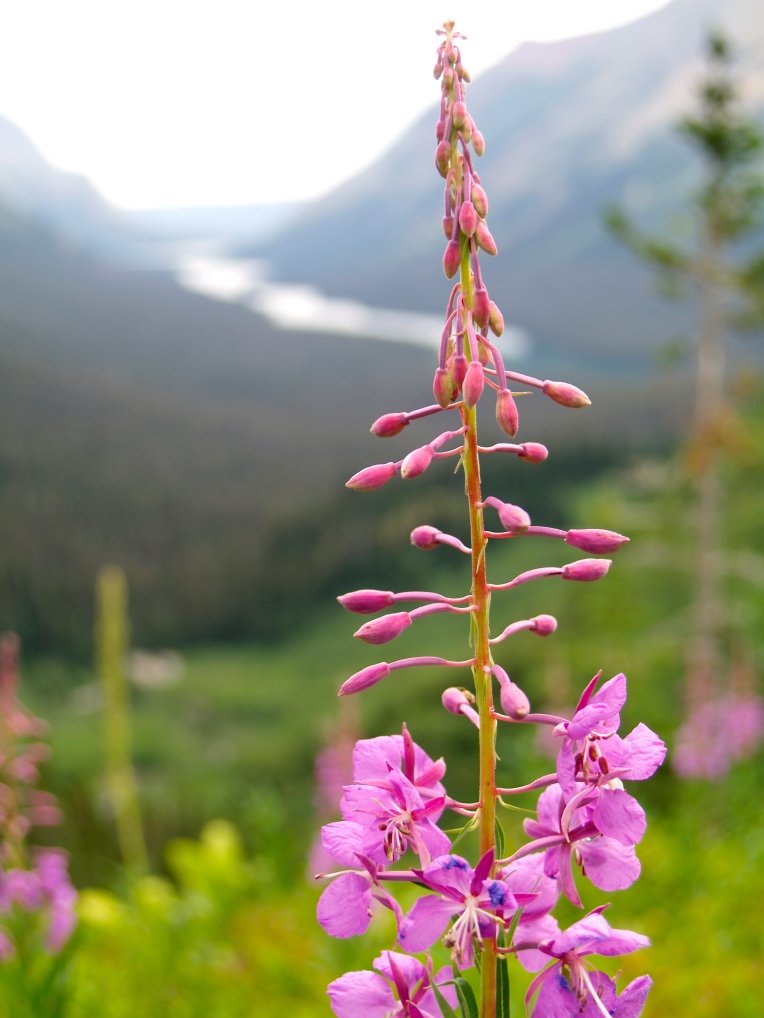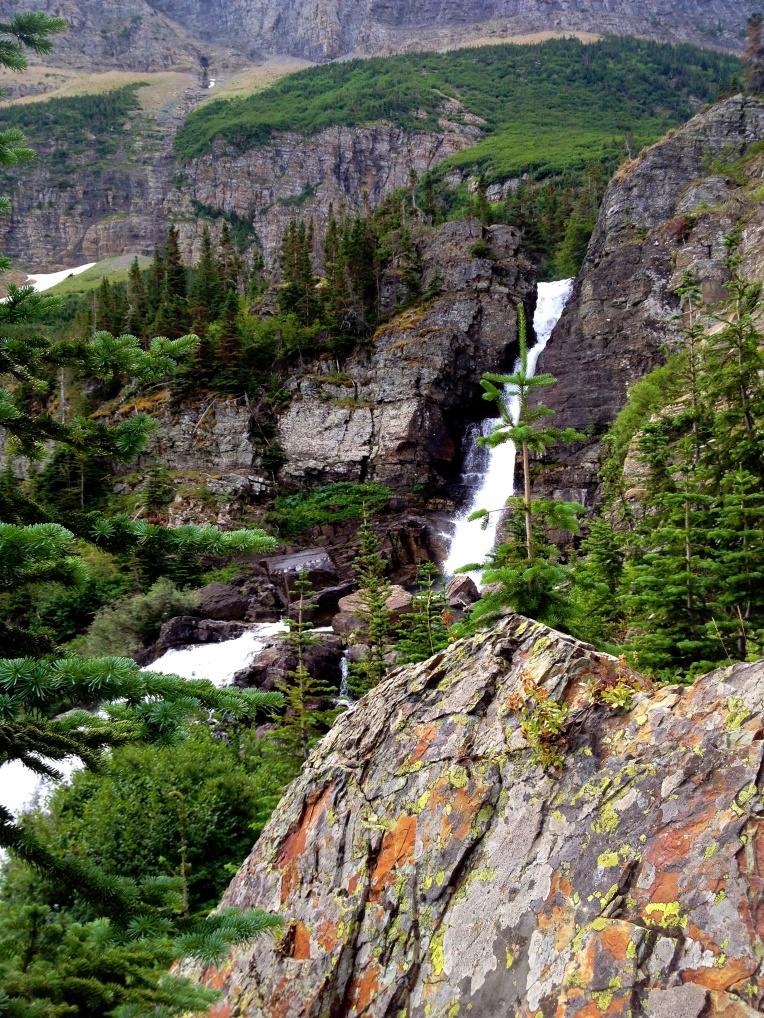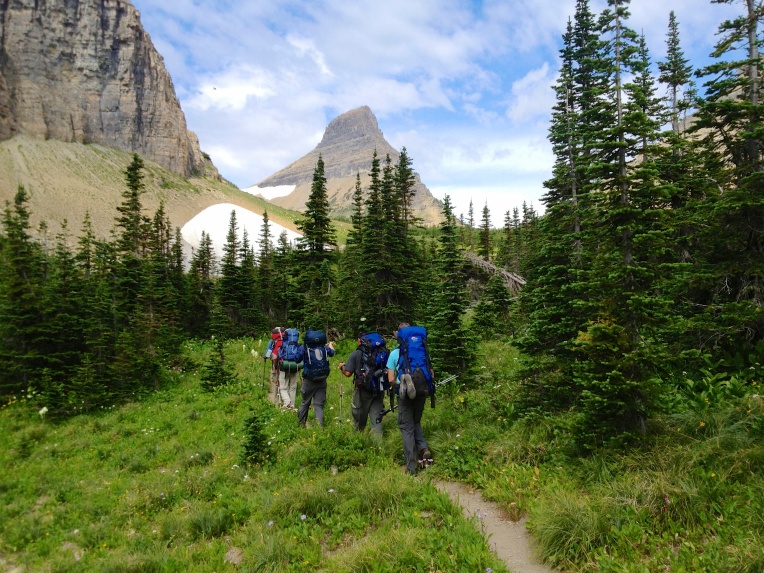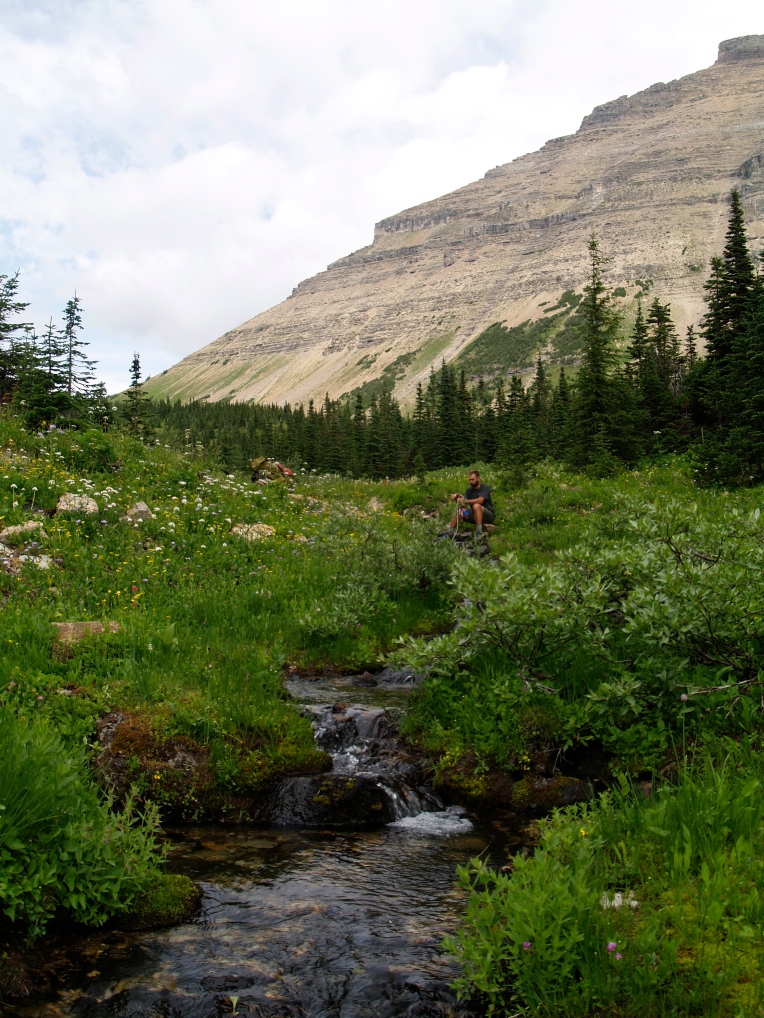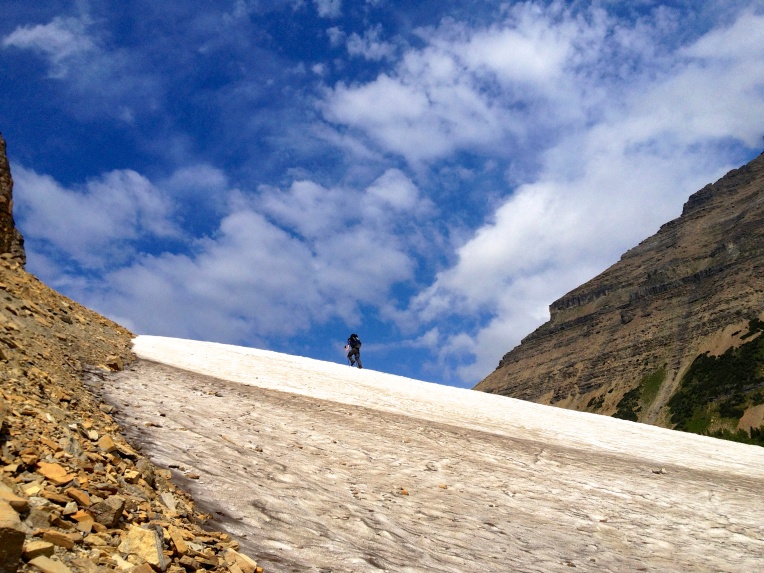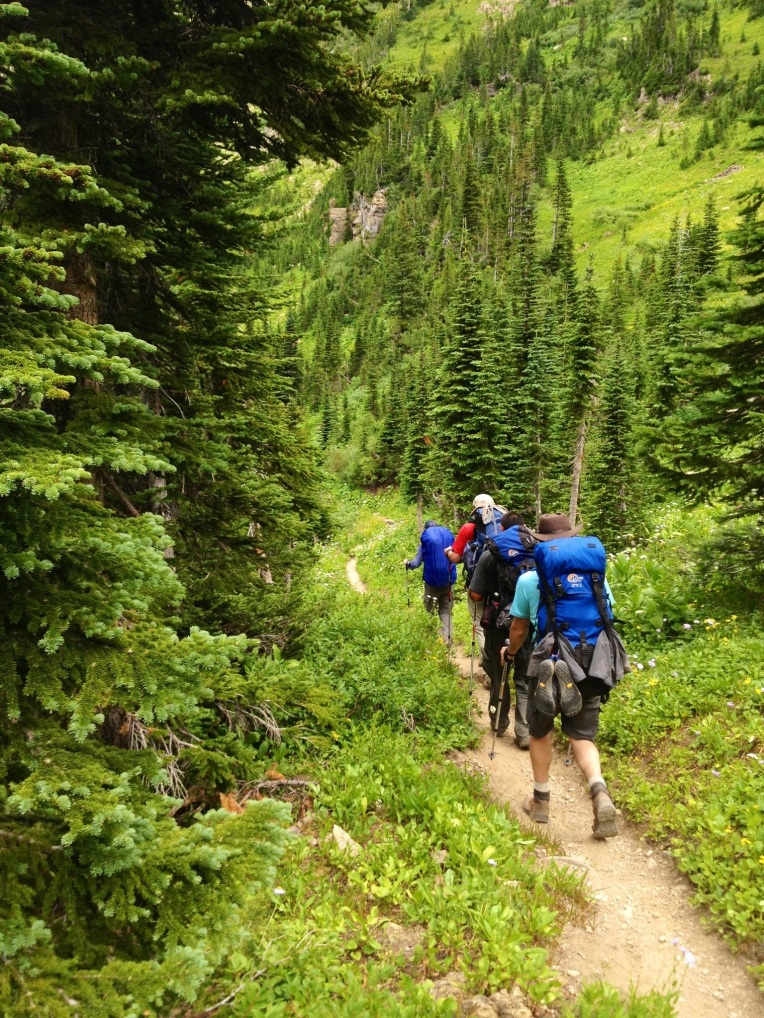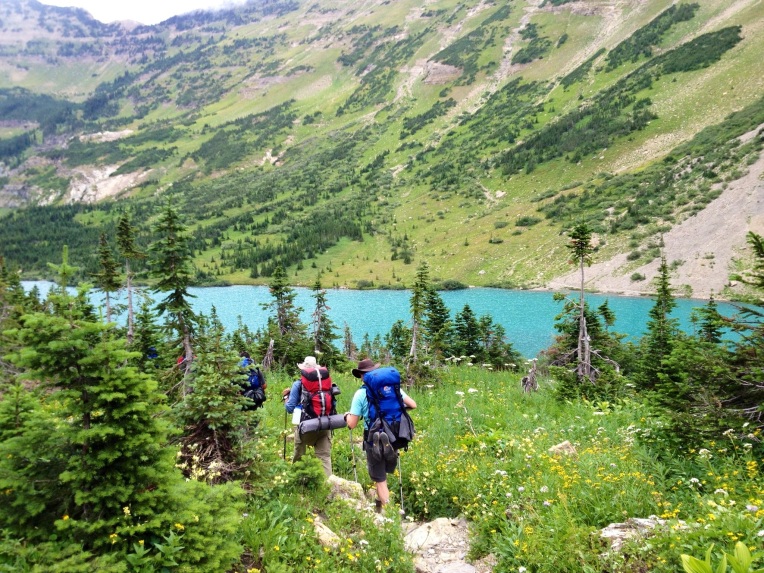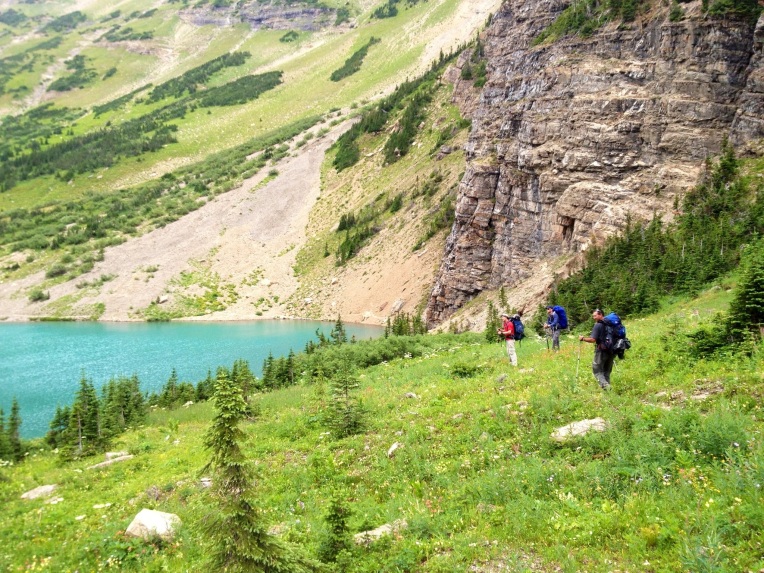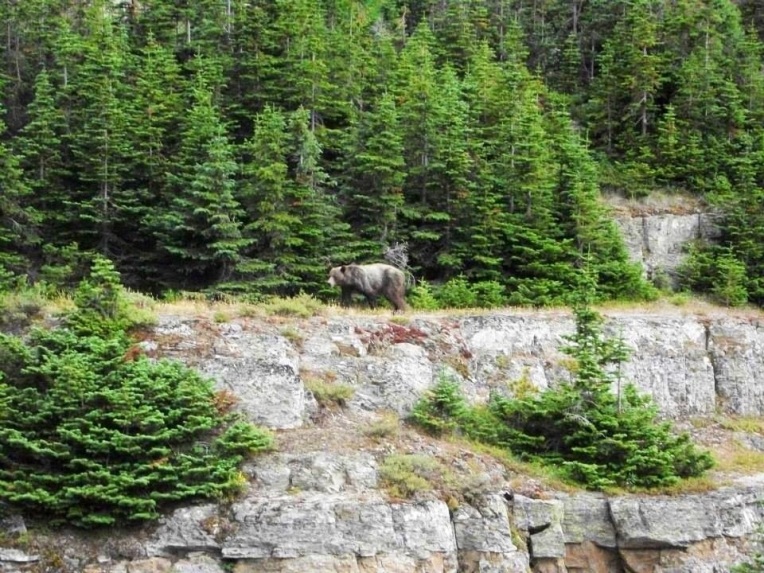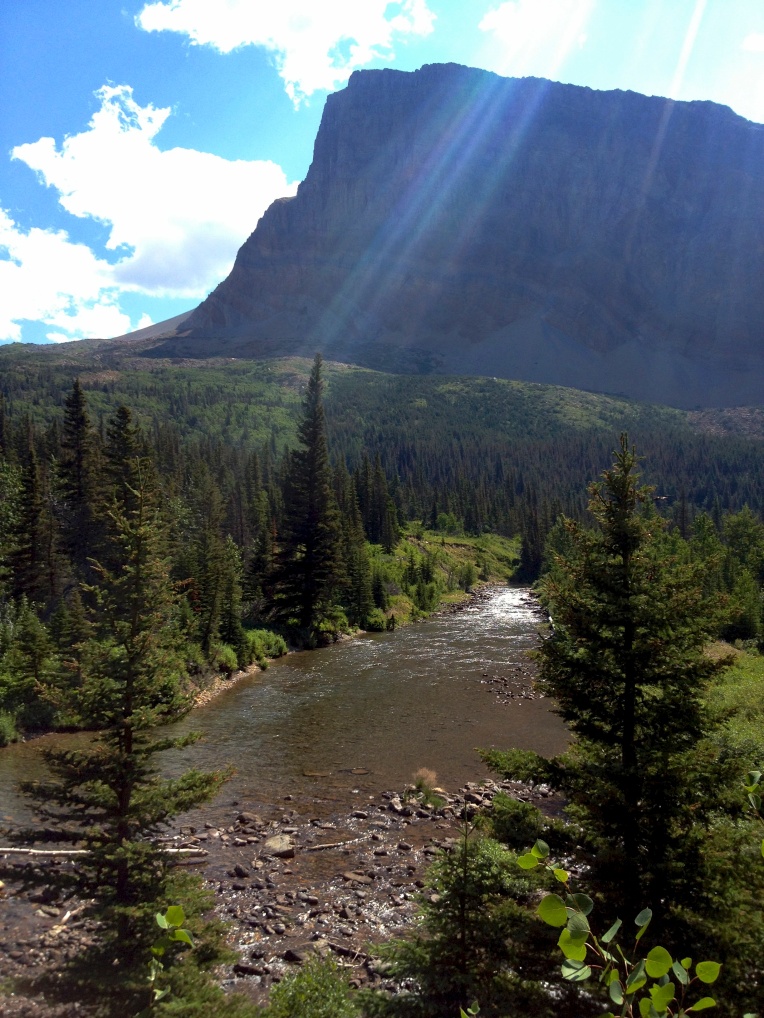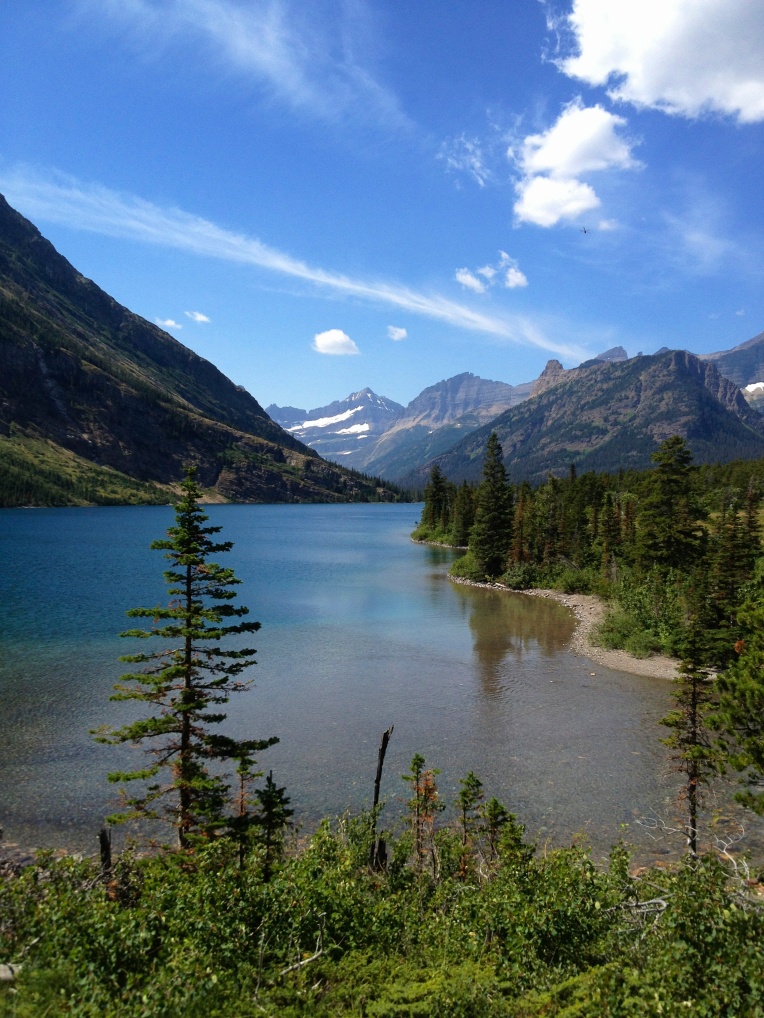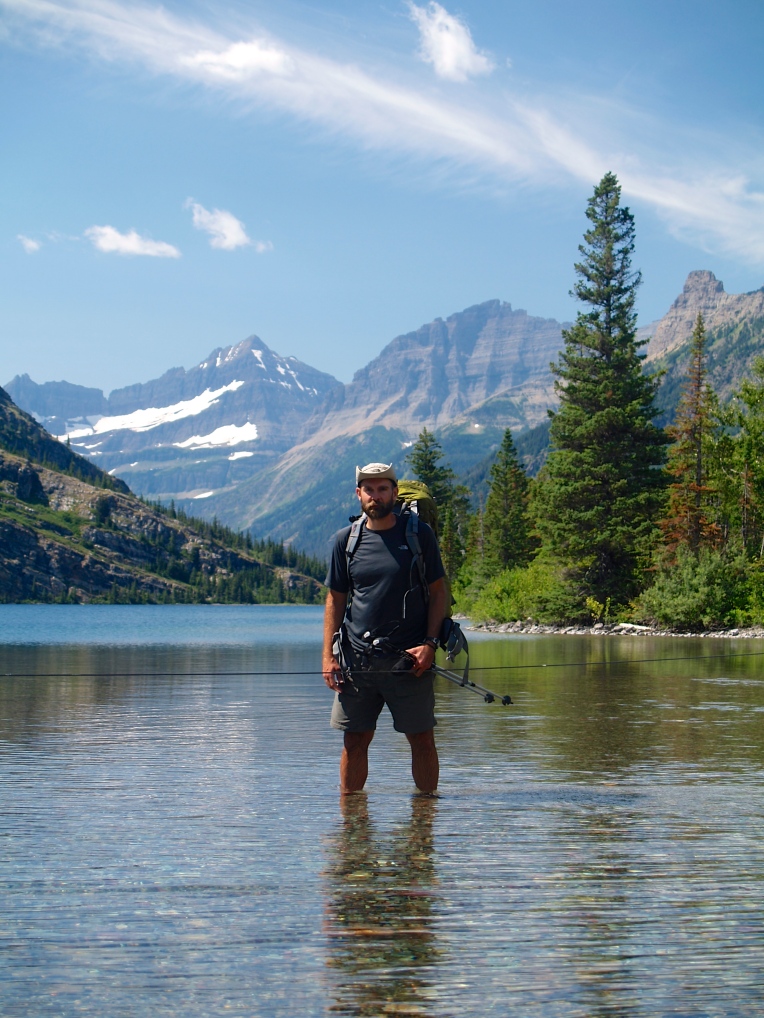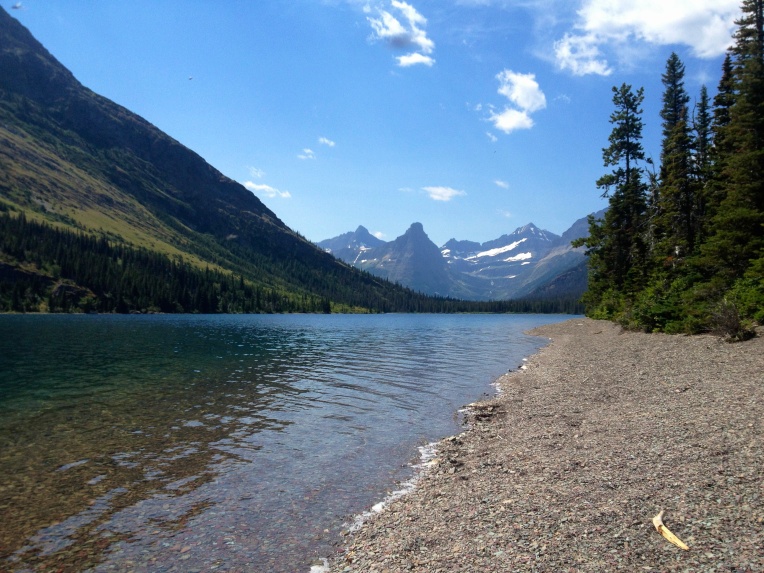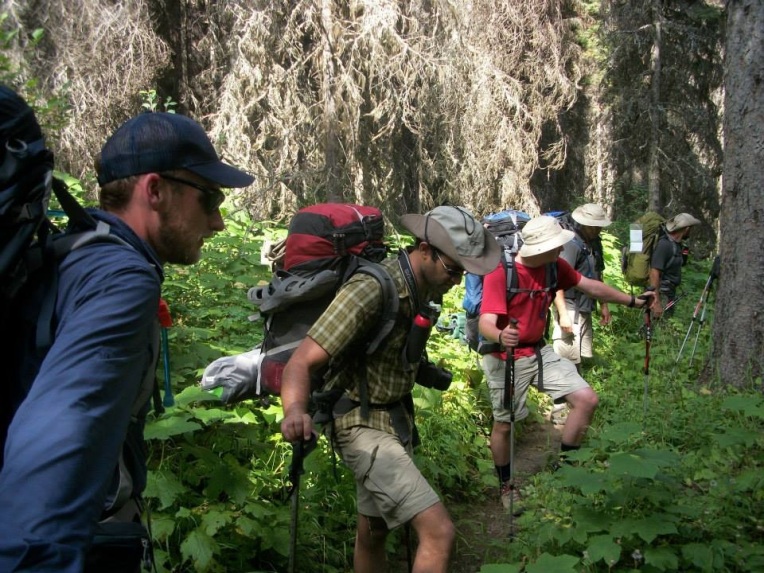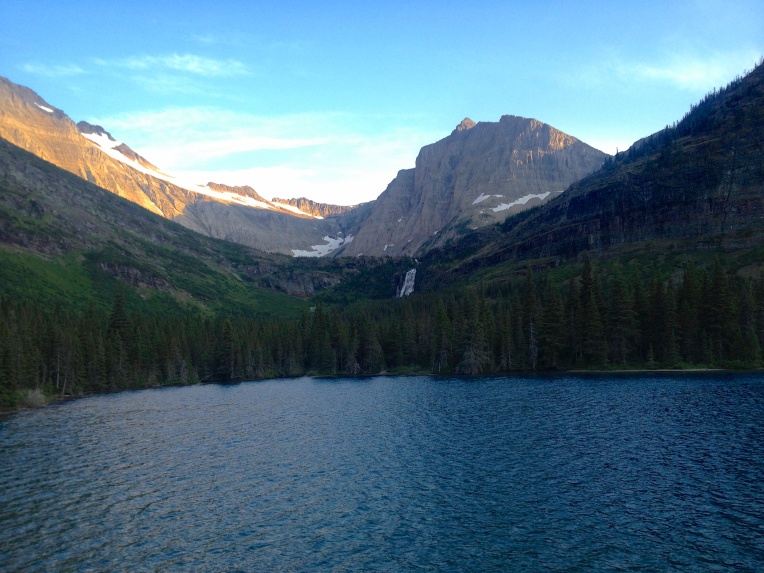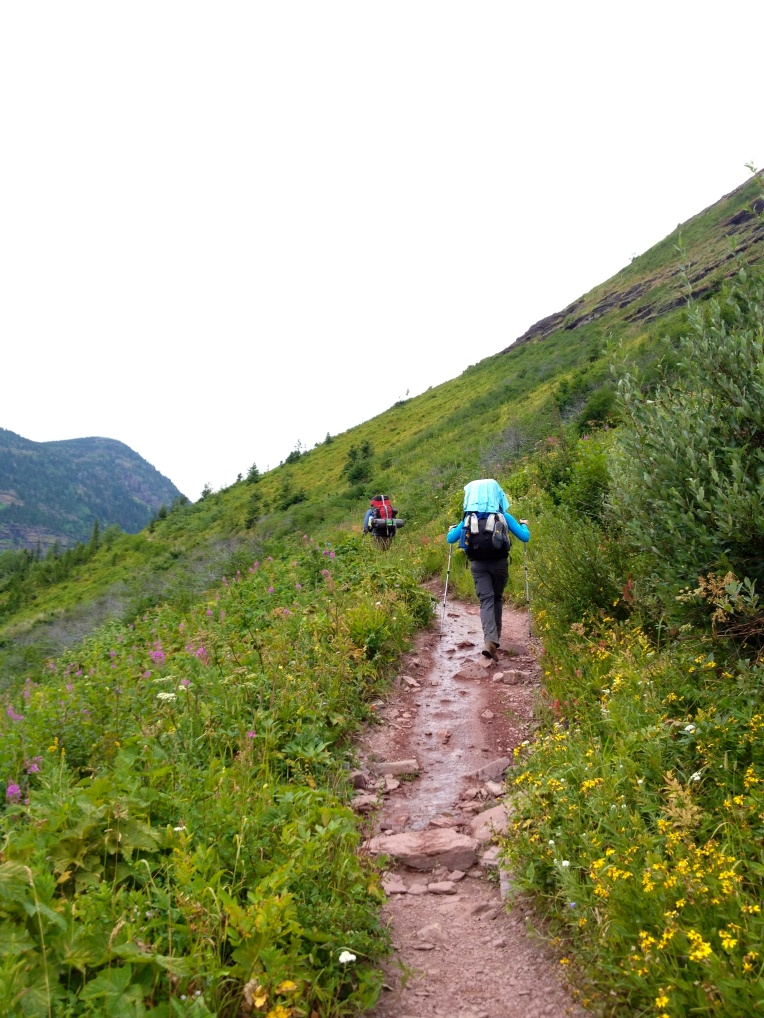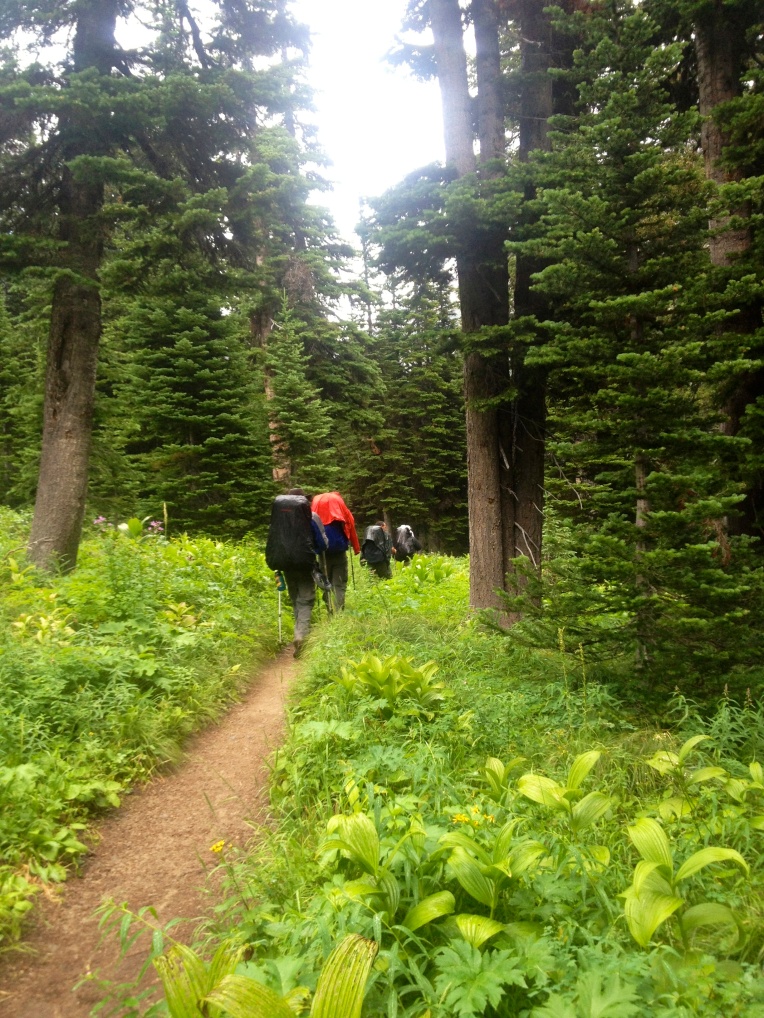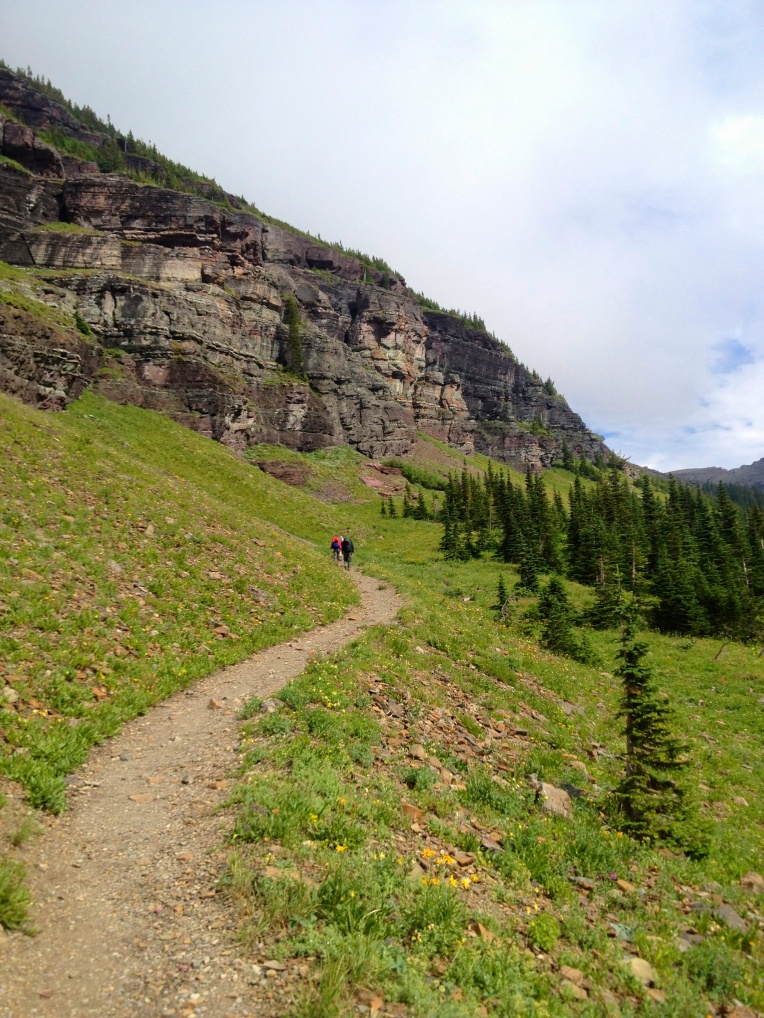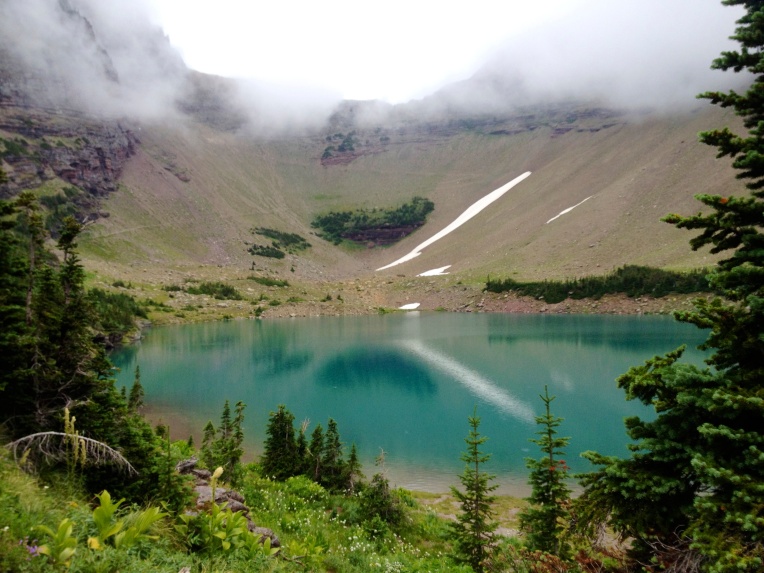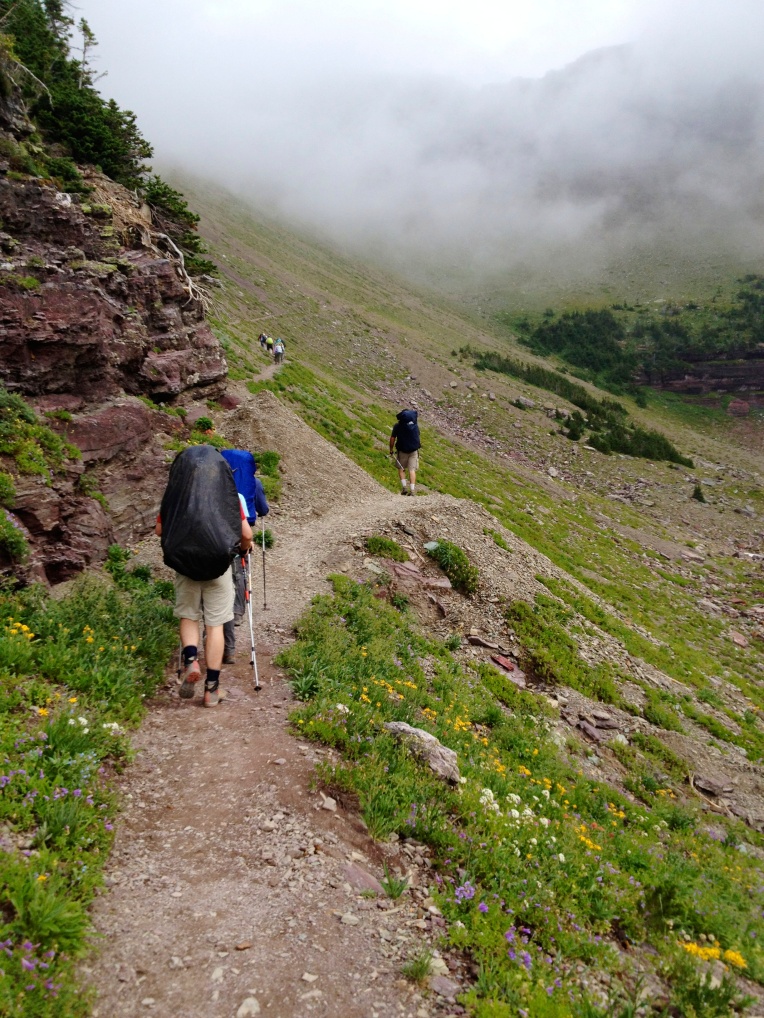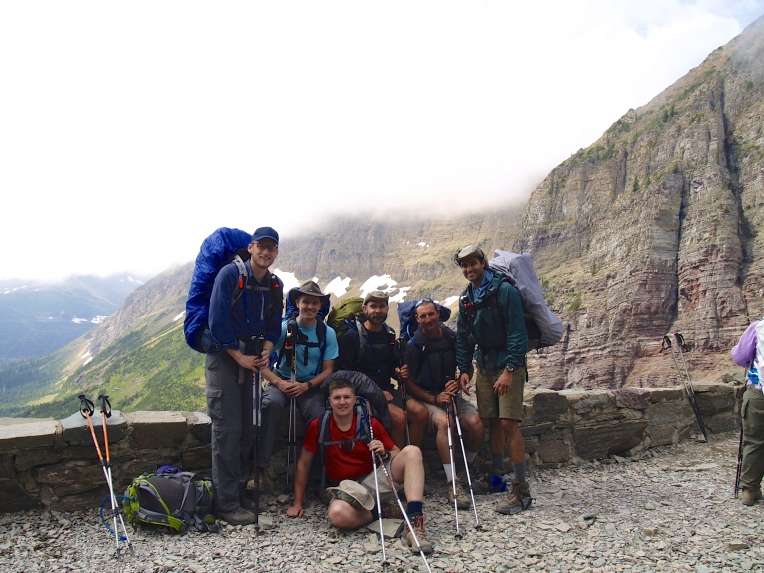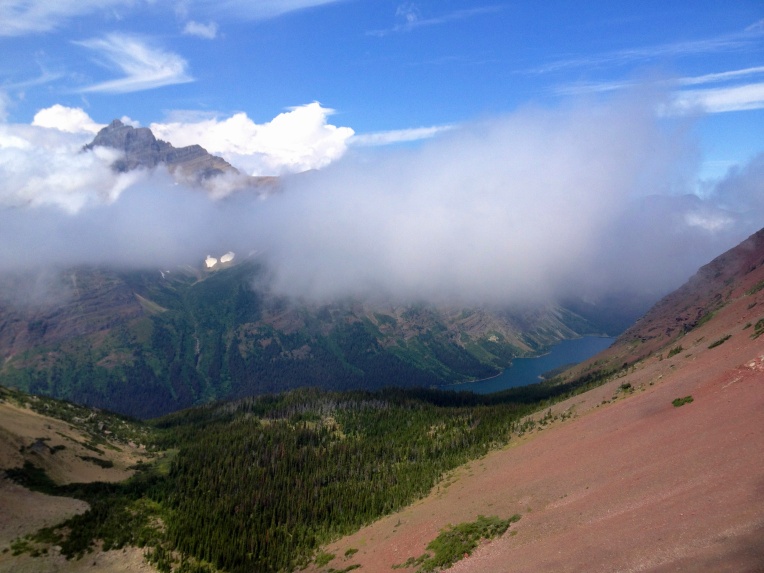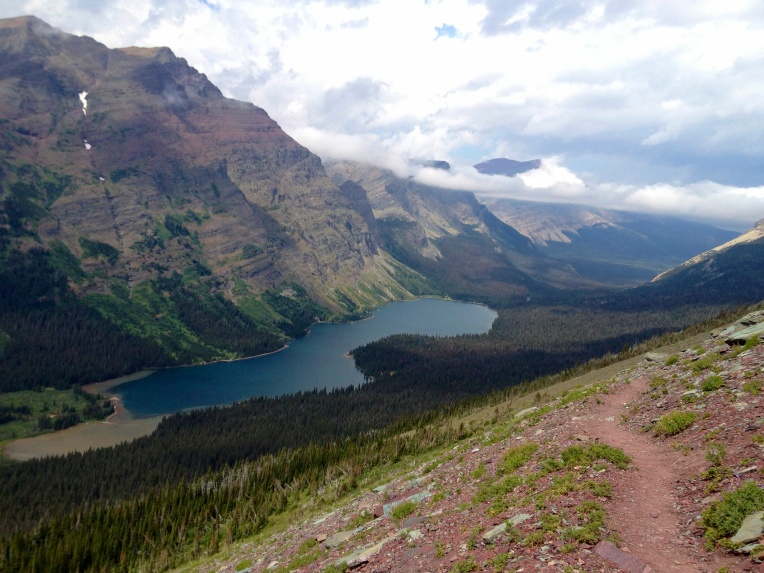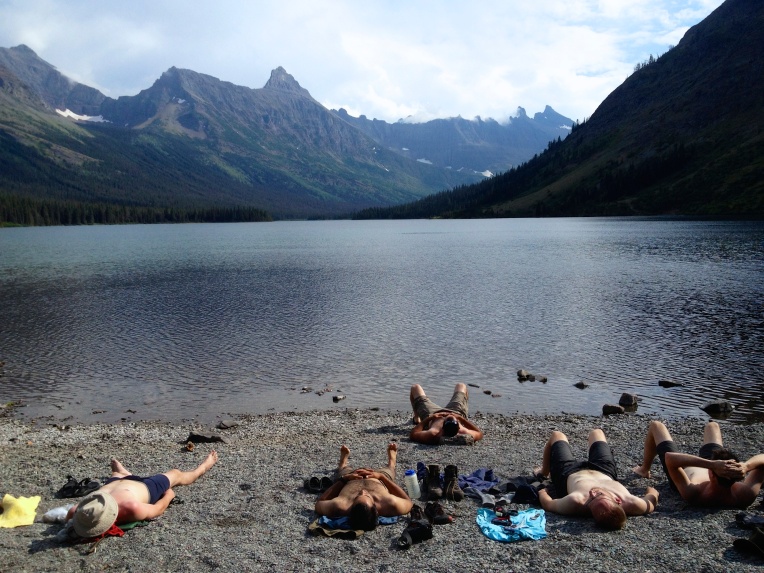Alaska: Wrangell-St. Elias National Park- Iceberg Overlook to Iceberg Lake
Total Mileage- 6.04 miles
Total Elevation Gain- 891 feet
Total Elevation Loss- 1889 feet


Day 5 in Wrangell St. Elias National Park in southeast Alaska started with a day hike and ended with our trek to Iceberg Lake where the bush plane would be picking us up on day 7. Logistically there was a discussion on how we would play day five. From Iceberg Overlook (where our camp was set) we definitely wanted to do a day hike to find a hidden lake that had Patrick and Josh obsessed. But after the day hike, we discussed camping one additional night on Iceberg Overlook because it was just such a stinking great spot, likely one of my favorite campsites on any trip. But, with some rain likely late in the afternoon we decided to go ahead and make our break toward Iceberg Lake after the day hike.


Our day hike took us north northeast away from Iceberg Lake and up about 900 feet. As is typical with Alaska, there were blueberries once again covering every step. I have to admit feeling guilty when backpacking Alaska, because you just can’t walk without stepping on blueberries! Our hiking time doubles because we can’t help but continually stop and forage. So much goodness and abundance. Not to mention that this was a STUNNING hike. The higher we ascended, the more ridiculous the panoramic views became. If you ever make it into this area of Wrangell, figure out a way to spend an entire down day hiking around and exploring. You will be better for it.






Honestly, there isn’t much to say about this other than… wow wow wow. Out of every trip we have taken… THIS is the most beautiful spot I have ever stood. I could have stayed the entire week in this place.


After we broke camp, we began our five mile jaunt to Iceberg Lake. This is where we were planning to camp on night five and day hike from on day six. That plan would change, but we still had to get to Iceberg Lake and find the landing strip. We headed down the gentle slopes of soft, spongy tundra laden with rocks and boulders and it was a pleasant, leisurely trek. That is until we got down to the braided glacial streams that reminded us that Alaska is never to be taken leisurely! While the streams look like you could just jump over them in the pictures, let me assure you that isn’t the case. They are deep and very fast moving. Admittedly, we waste a lot of time trying to find narrow portions that are easier to traverse, rather than just jumping in and going for it. I have said this about other trips, but I hate wet boots. I will jump in, but I always look for an option that keeps my boots dry. But as you soon figure out in the wilderness, you just have to suck it up and get across.
The only hiccup we had with the crossings was that Adam lost one trekking pole a couple of days earlier, which was going to decrease his stability in crossing. I would either lock arms with him on a crossing, or throw one of my poles to him after I had crossed. On this particular section there wasn’t anything that required anything more than trekking poles and a basic understanding of how to cross. The deepest we encountered was just above the knees.
One additional navigational point. As you are traveling south from Iceberg Overlook, I would recommend hugging a bit more toward the west. If you look at the very rough Google Map above, you will see that cutting too far east will get you into trouble, as the terrain gets very step and hard to traverse. Also, if you err toward the east, you will have an incredibly difficult time getting back to the airstrip because the crossings become too difficult. There isn’t any real way to tell you how to do it other than to stay away from the more eastern route.



As is typical with difficult sections, I rarely take pictures. Sorry. It was cold and rainy and we were pretty wet from the crossings. After finishing the last portion of stream crossings and getting into the sand, we ducked into a small sand carve out to block the incessant and biting winds, and to also figure out our navigation points. It is at that point that we used the GPS device to check the weather. What we saw was that the rain was going to continue for the next day unabated at 100%. We debated what we ought to do, because the next day was to be a full day of day hikes. We decided to send a text to the bush plane company to see if they were going to be in the area the next day. As it turned out, they would be dropping a group at the exact spot where we would be camping. While it was unfortunate to bail one day early, none of us felt like getting hypothermia. We set our tents up in the sand while it poured rain (yup, nothing there but sand!). After getting off the cold, wet clothing and drying out the tent, I went to bed in my toasty sleeping bag.
The next morning was cold and rainy, as expected, but it wasn’t long before we could hear the low roar of our ride out. Wrangell St. Elias was everything and more and more and more. I absolutely cannot wait to go back there one day.



